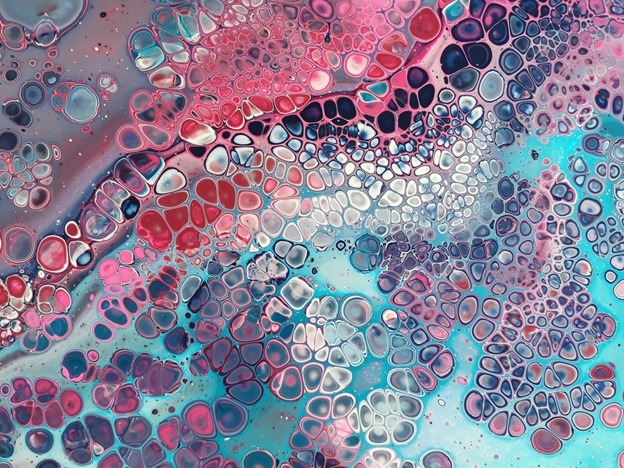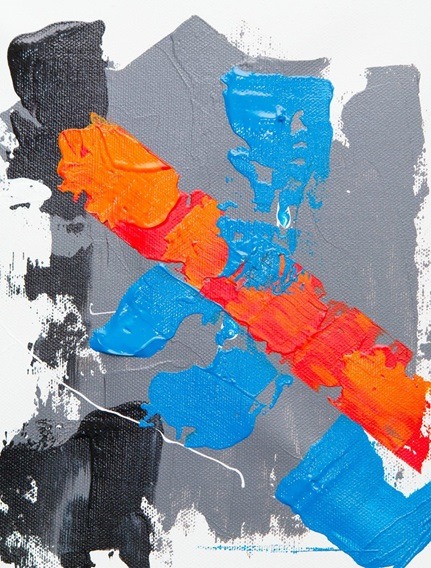Abstract art has been all-around for more than a century. Although some are saying that abstraction started with cave paintings thousands of years earlier, the origins of abstract art as an activity came to fruition in the late 19th century. Throughout this time, new improvements and basic changes in the areas of technology, science, and philosophy influenced many artists to generate a new style that embodied the swiftly evolving world in which they now lived. As a lot more secular ideals created, artists wanted a deeper and divine interconnection to their world and in turn, departed from figurative and representational work and shifted toward explorations in abstraction. So, Art Acacia is a preferable online gallery for abstract art and abstract portrait. An abstract portrait can certainly be a painting or an artwork, or there can also be abstract portrait photography, abstract portraiture, abstract portrait installation, abstract portrait performance art, etc.
What Is Abstract Art?
Abstract art-also generally referred to as nonobjective art-is painting, sculpture, or graphic art that does not try to symbolize an accurate representation of visual reality. Through definition, to “abstract” indicates to “extract or remove” one thing from another. Therefore, abstract art draws from basic elements of artwork such as color, shape, and line, and renders subject matter as pared-down, indistinct forms. The term is also applied to classify art that does not take its inspiration from external physical or visual sources such as geometric patterns, featuring the point that abstract art is not representational and could be developed from a real-world object, or no object at all.
The Highlights
Origin
The origins of abstract art can be traced back to previous movements such as Impressionism, Post-Impressionism, and Cubism, which really helped form the concept that art could be non-representative and more subjective in nature. One more catalyst for abstraction was the establishment of “art for art’s sake,” a theory that started from the French l’art pour l’art. This concept which first appeared within French literary circles in the early 19th century-furthered the belief that art required no justification and was of value regardless of the objects it depicted.
History and Influences of Abstract Art
Art historians usually credit Russian-born artist Wassily Kandinsky as the first artist to create abstract paintings. He painted renderings of floating, representational forms as early as 1912, and introduced abstraction to America during the Armory Show (also recognized as the International exhibition of Modern Art) in 1913.
Abstract Expressionism
During World War I, movements such as de Stijl “The Style” in the Netherlands and Dadaism in Switzerland assisted widen the spectrum of abstract art. Nevertheless, the time period between World War I and World War II marked a lull as Totalitarian politics, combined with new art movements like Surrealism, got the spotlight. After World War II was over, Abstract Expressionism appeared, getting mass appeal and adding New York at the core of the Western art world. Since the 1950s, Abstract Expressionism has been a broadly practiced and influential style within European and American art.
Characteristics of Abstract Art
Actual characteristic of the abstract artwork is that it is a nonrepresentational practice, indicating that art movements that accept abstraction departure from exact representation – this departure can be slight, partial, or complete. It relies on what kinds of abstract art we are discussing about. In geometric abstraction and lyrical abstraction, we may talk about total abstraction. Figurative art is recognized by partial abstraction. Actually realistic art can have partial abstraction as well. However, all abstract artists work with color, memory and visual sensation to present that reality is subjective – and that is possibly one of the most essential features of abstract art. This unique subjective approach in contemporary art coincides with very similar approaches in social sciences, specifically in philosophy.
It Is Not All about Abstract Expressionism
The abstract art arrived at its peak in 1950s, 1960s and 1970s. New York was the heart of this significant phase in the improvement of abstract art and a whole new era of abstract artists well-known as the Abstract Expressionists of the New York School (names like Willem de Kooning, Jackson Pollock, Arshile Gorky, Lee Krasner, Mark Rothko, Franz Kline, among others) appreciated it to impressive effect. Occasionally, abstract expressionism is introduced as the “purest” example of abstract art. Abstract art covers other art movements and all sorts of different kinds of abstract art as well: neo-Dada, fluxus, happening, conceptual art, neo-expressionism, installation, performance, video and pop art – all these significant art movements have characteristics of abstract art.
What Is Abstract Art To You?
So, many artists were asked, “What is abstract art to you?” Final results indicate absolutely no two answers are the same, and that is the way it is supposed to be.
A Way of Seeing
“Actually ‘Abstraction’ is not an art movement, a moment in art history or a type of painting. It is a vital integral connector to the vitality of painting. Exactly what is remarkable for me is that as I go out past what I know-past where I am controlling what I do-to find coherency and form. Get in touch with this wordless coherency, the gift of form is a profound homecoming.” – Timothy Hawkesworth
An Emotional Outpouring
“Generally Abstraction, is similar to poetry, does not dictate a clear narrative but rather, calmly offers a fragment, a piece of a mysteriously well-known narrative. In artwork, generally there has continued to be a paring down of recognizable natural forms, which now have given way to a personal abstract vocabulary of shapes, colors and forms. The prominent use of abstraction has granted me to distill and better connect my feelings and concepts about life, nature and our respective place within it.” – Nicholas Wilton
A Point of Discovery
“Even though my very own artworks are abstractions that do not resemble conventional Chinese artwork, I still work from observation and I present my own honest emotions or ideas through colors and brushstrokes that have turn out to be my own tradition as an artist.” – Yuan Zuo
How to Look at Abstract Art
Therefore, how do you really look at it and understand it? Do you stay in front of it and attempt to find familiar figures or do you just glance at it in passing? There are various ways to approach and criticize art is essential when trying to understand abstraction. Abstract paintings can also be highly valued in terms of the specific elements of art: color, shape, line, texture, space, value, etc. An abstract artist’s capabilities lie in his or her ability to use colors and textures to their best visual strength and to make a sound composition from these factors. Here are some dos and don’ts to always keep in mind:
- Do not look at the clock.
- Do not insult the artist’s imagination.
- Do not mind the title.
- Do not stress about feeling something.
- Do read the wall text.
- Let the painting reach out to you.
Exactly what is Abstract Art for Creative Persons and Artists?
Always keep in mind artists of whatever stripe are rebels towards the grain of society no issue what they choose to do. You must think of creating abstract art as an outsider’s merit badge that sets you apart from the audience.
21st Century the Return of the Abstraction
The 21st century gave birth to several different art movements. As technological advancement introduced new possibilities, new, interesting movements have emerged, and many of them shared some features of abstract art and could be explained as abstract art: digital art, computer as well as internet art, hard-edge artwork, geometric abstraction, appropriation, hyperrealism, photorealism – to mention a few. As we have already been existing in the postmodern world for years, abstract art can only further evolve. Hyperrealist, surrealist – we hear these words in daily life. Artists are not aliens; they usually react to the improvements in society they live in. Therefore, we can only assume that we see some new great examples of abstract art. That is why Art Acacia offers abstract face art, abstract portrait, abstract portraiture and all kinds of abstract arts.


